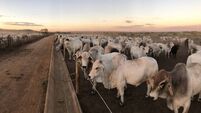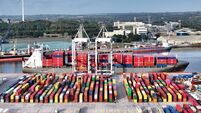Global shortage of affordable fertilisers will leave no household unscathed

Group of white jumbo-bags with chemical fertilisers in a warehouse
For the first time ever, farmers the world over — all at the same time — are testing the limits of how little chemical fertiliser they can apply without devastating their yields come harvest time. Early predictions are bleak.
In Brazil, the world’s biggest soybean producer, a 20% cut in potash use could bring a 14% drop in yields, according to MB Agro. In Costa Rica, a coffee co-operative representing 1,200 small producers sees output falling as much as 15% next year if the farmers miss even one-third of normal application.
In West Africa, falling fertiliser use will shrink this year’s rice and corn harvest by a third, according to the International Fertilizer Development Center, a food security non-profit group.
Patrice Annequin, a fertiliser market expert at IFDC based in Ivory Coast, comments:
When you add increased hunger across West Africa on top of existing risks like terrorism, “this is absolutely dangerous for many governments in our region”.
• Bloomberg














